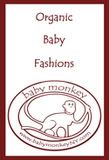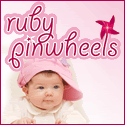http://www.newchildmontessori.com/index.html has great Montessori curriculums for sale. On the website they have examples of their curriculum divided up by the different seasons. Here is an example of the fall:
- 9:00 Circle: Read I Offer You Peace (and do hand movements) or Peace is a Circle of Love or We
Can Get Along: A Child’s Book of Choices. Demonstrate use of words such as "Please don't touch my work." - Demonstrate the “Peace Table.”See A Million Visions of Peace or Peacemaker’s A, B, C’s
for Young Children: A Guide for Teaching Conflict Resolution With a Peace Table or A Leader’s Guide to I Like Being Me, or A Supplement to the Guides: Instructions for the Montessori Work. - Poem- We’re Telling the Teacher Finger plays- Five Little People and The Cutting Song
- YOGA: 12345 Breathing, Staff Pose, Cobbler’s Pose, Butterfly Pose (2, 5, & 6.)
- Lesson- GREETINGS (P)
- PEACE TABLE (P)
- HAND BROOM & DUSTPAN (P)
- CARRYING SCISSORS (P)
- CUTTING STRIPS on short straight lines (P)
- CARRYING A PITCHER (P)
- FLOOR BUCKET AND SPONGE (P)
- ART: Straight line design Use white board or chalk board to show– A line is a point moving inspace. Make a “straight” line and a “curved” line. Today we will make a straight line design.We see straight lines in houses and buildings. Look around our classroom and see how many straight lines we can see--shelves, table, corner of the wall, work rug, box, pencil, paper.
- 11:45 Circle:
- Sing Taking Turns.
- YOGA: Slide Pose (See Pose #7.)
- Story Time (followed by quiet music and quiet time) It’s Mine! (selfishness) or Old Turtle
- 3:00 Circle: BATHROOM MANNERS
- Read I’m Like You, You’re Like Me.
- YOGA: Sage Pose (See Yoga Pose #8.)
- Lesson- LISTEN AND DO (L) First oral / verbal commands: Bring me a block (pause) Blake.
- INTRODUCTION TO THE BATHROOM (P)
- POURING GREEN WATER (P)
- KNOBBED CYLINDER BLOCK 2 (S)
- TOUCH BOARD rough/smooth (S)
- SANDPAPER TABLETS (S)
- MAKING AN APOLOGY CARD (P)Introduction to the Bathroom Lessons on use of the toilet and toilet paper, faucets (on/off, hot/cold),
soap, towels, bathroom rules.
-----------------------------------------------------------------------------------------------
9:00 Circle: OUR NATURE TABLE- Explain the use of the nature table for displaying natural objects(bird nest, wasp nest, cicada shell, rock, fossil, seashell, pinecone, feather, acorn, pressed leaf,pressed flower). Talk about the difference between natural and manmade objects.- Review the last 5
pages of The Listening Walk (which was read Tuesday.) Silently get up and go outside for a listening walk. Sit on a blanket or outside circle and play the Silence Game and listen to the sounds of nature. - YOGA: Table Pose and Cat Stretch (See Yoga Poses 9 and 11)
- Lesson- NATURE OBJECTS AND CARDS (L) CUTTING STRIPS- Curved line (P)
- NATURAL / MANMADE OBJECTS (L) MAGNIFYING GLASS
- DUSTING THE NATURE TABLE (P)
- 11:45 Circle: Ask the children what they heard on their listening walk. Sing a song about nature.
- Sing it the first time normally. Repeat softly, repeat a third time by moving mouth silently using hand movement or sign to tell the story. We will be learning American sign throughout the year.
- Lesson- CARRYING A BOOK (P), TURNING A PAGE (P) Read Counting Wildflowers.
- Story Time (followed by quiet time)- I Am a Part Of Nature or read about how Helen Keller learned that everything has a word for it in The Children’s Book of Heros, p.86.
- 3:00 Circle: Read A Closer Look. WALKING WITH A BELL (P)
- Lesson- SCRUBBING A SHELL (P) FLOOR BROOM AND DUSTPAN (P)
KNOBBED CYLINDER BLOCK 3 (S) KNOBBED CYLINDER BLOCK 4 (S)
PICTURE TRACING (L) - ART: Curvilinear design
Most lines in nature are curved–shell, leaf, acorn, rock, feather. Look for curved lines in the classroom. Add a french curve to the art shelf (drafting template available in drafting supplies). - WORK
Objects and Cards- Natural objects such as pinecone, feather, rock, shell, fossil, acorn, leaf.
On a card-size piece of posterboard, draw around pinecone with a pencil, trace the line with blackmarker. Print “pinecone” below it. Make a card for each object. Laminate.
LessonSLay out cards. Place each object on its outline. Point to the word below saying “pinecone.”
Objective: Every object has a word for it. - Natural / Manmade Objects- Felt with a dividing line down the middle. Place the “natural” and“manmade” objects on the appropriate side of the felt.
- Extension:
Natural / Manmade printing- Ten manmade (button, etc) and natural (seashell,etc) objects glued oncorks, printing ink pad, Paper divided in the middle with “manmade” and “natural” at the top ofeach side. Process- Print the objects on the appropriate side
------------------------------------------------------------------------------------------------
9:00 Circle: DO STARS REALLY TWINKLE? Sing Twinkle, Twinkle, Little Star. The stars are far away suns like our sun. Our sun is in our solar system and closer to us, but stars are so far away only a small amount of their light hits our eyes. Not enough light hits the rods in our eyes and the stars LOOK like they are twinkling when really they are not.- YOGA: Star Pose (See Yoga Pose #35.)
- WHAT IS A CONSTELLATION? People long ago played connect the dots with the stars to make pictures in the sky. These are the constellations we know today. The brightest star in our night sky is Sirius in the constellation The Big Dog. The brightest star in our daytime sky is our Sun.Read Stars or Stars and Galaxies or Where Are the Stars During the Day? A Book About Stars.
- Lesson- CONSTELLATION CONNECT THE DOTS CONSTELLATION CARDS
- ART: Constellation crayon melt
- 11:45 Circle: Do Touching Stars and Falling Stars circle exercises. See page 15.
- SILENCE GAME, then, in the silence, whisper “In nature we find silence- the stars, the moon, andthe sun move in silence,” a quote from Mother Teresa.
- Story Time- Draw Me a Star
- 3:00 Circle: THE BIG DIPPER Read The Big Dipper or The Starry Sky Collection.
The dig dipper is a part of the constellation called the Great Bear. (Use a lamp or strong flashlight to show The Big Dipper on the ceiling. Make a black shade with pin holes to let the light through.) The North Star, or Polaris, is the brightest star in The Big Dipper. Because the north pole is spinning in one place, and Polaris is over it, it is the only star that appears to stay in once place in our sky. For many years people have used the north star to find the directions. Polaris is actually more true in finding north than using a compass. - Lesson- PLACING THE FOUR DIRECTIONS USING POLARIS (G)
- PUMPKIN RUBBER STAMP STAIR (M)
- NIGHT SKY
WORK
Constellation Connect the Dots- On paper make dots in the formation of some of the constellations such as The Big Dog and The Great Bear. Number the dots. Lesson- Connect the dots in sequence. Night Sky- Do hole punching work using a constellation. Assemble the flashlight. Take the punching work and flashlight to a dark room or closet. Shine the flashlight up to the ceiling with the punchedhole pattern over it to resemble the night sky.
Placing the Four Directions using Polaris
-------------------------------------------------------------------------------------------------
9:00 Circle: The Mighty Ocean (Big Book) Sing Out in the Deep Blue Sea One Day.- Lesson- LAND/WATER ANIMAL MODELS AND MAP- Place animal models on a world map.
- OBJECT BOX/SANDPAPER LETTER “I” (L)
- PARTS OF A FISH CARDS (L)
- OCEAN/SEASHORE CLASSIFICATION pictures (G)
- COOKING: Starfish sandwich or Fish bowl
- 11:45 Circle: Read Our Ocean Home.
- Play I SPY “i” in the classroom- inset, inside shoes, inch, etc.
- YOGA: Fish Pose and Shark Pose (See Yoga Pose #43.)
- Story Time- Swimmy (A little fish uses ingenuity and cooperation to solve a big problem.
- 3:00 Circle: THE OCEAN Read any of the books listed or your favorite. If the classroom already hasan aquarium, explain and demonstrate its care. If not, bring an aquarium, heater, filter, and graveland set it up. Let the children carry a pitcher with water to fill it. Talk about what we would like to put in it- plants, fish, snails and how they work together as a community. Let the aquarium set at least a day before adding its inhabitants. Lesson-
- OCEAN NOMENCLATURE CARDS
- WATER TRANSPORTATION CARDS OR PICTURES
- MATCHING SEASHELLS Match pairs of real seashells
- SMALL/MEDIUM/LARGE SEASHELLS real seashells
- SHELL ADDITION and presentation of plus (+) and equal (=) symbols (M)
- ART: Watercolor painting on wet paper (wet on wet)
- WORK
Parts of a Fish- An internet search will find diagrams and nomenclature for parts of a fish.
Basic parts are: dorsal fin, caudal (tail), pectoral fin, pelvic fin, anal fin, lateral line, head, mandible,maxilla, nostril, gill slit. - Ocean Nomenclature Cards- Available at www.prioritymontessori.com Item # 154
SONG
Out in the Deep Blue Sea (Tune: One Little Elephant Went Out to Play)
Out in the deep blue sea one day, one little dolphin went out to play. He had such enormous fun,that he called for an octopus to come. Continue with other ocean animals. - COOKING
Starfish sandwiches- Cut two pieces of bread with a star cookie cutter, fill with real butter or peanutbutter. Check for allergies for peanut butter or avoid it altogether. - Fish bowl- Fill a new, washed fish bowl with blue gelatin, add gummy fish when partially set.




















0 comments:
Post a Comment